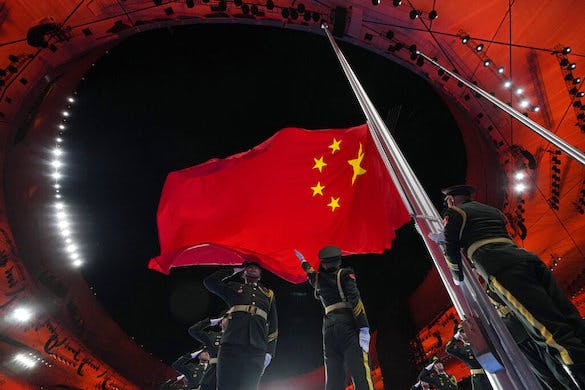Don’t Forget To Keep an Eye on Russia’s Far East Borders
If Russia can do so, why shouldn’t China redraw its own borders?

While the world’s attention is understandably focused on Russia’s invasion of Ukraine, the aggressor country is risking opening a Pandora’s box of territorial problems in its Far East.
China, with its near-silence in effect an endorsement of the Russian action, is in an awkward position. Beijing has long stated that it supports the principles of respecting sovereignty and territorial integrity, and so condoning President Putin’s efforts to further alter Russia’s borders in Europe may have a logical extension: If Russia can do so, why shouldn’t China redraw its own borders?
China’s territorial questions extend beyond active disputes in the South China Sea, around Taiwan, and in the Himalayas. Its northeastern borders bear closer examination: While China appears to be a strategic partner of both Russia and North Korea, a major shift between any of those three countries could have important consequences.
Westerners have referred to the northeastern area of China — the hundreds of thousands of square miles and hundred-million-plus population between North Korea, Russia, and Mongolia — as Manchuria. Yet the common term for this region in China is simply Dongbei: literally, Northeast. The use of cardinal directions to describe a region suggests that the region could be expanded: Perhaps Dongbei can expand further northeast, into what is today Russia.
Such an expansion of Dongbei would reincorporate into China the lands that Russia established for itself and annexed from China between the 17th and 19th centuries. While the Chinese government in recent decades has downplayed these losses to Russia, it is nevertheless a loss. In other areas, Beijing has been keen to redress perceived historical wrongs — especially those involving territorial losses, such as Hong Kong, to Western powers.
The concept of China’s northeastern lands extending beyond currently recognized borders helps explain why China defines itself as a “near-Arctic state.” This definition of “near” could be temporal, not spatial.
Perhaps rather than trying to stretch the geographic bounds of what should be considered the Arctic, Beijing is instead signaling its future ambitions run northeastward. One can understand China’s claim of being near-Arctic not in terms of its current northernmost latitude — similar to the latitudes of the United Kingdom, the Netherlands, Germany, and Poland — but in terms of time. Maybe Beijing means that it is on its way to being an Arctic state, and is now a “soon-to-be Arctic state.”
The catalyst for a potential redrawing of China’s borders with Russia could involve North Korea. Any event on the Korean peninsula leading to a sudden outflow of refugees from North Korea into China and Russia, or perceived by Beijing as calling for Chinese military intervention, could upset the fragile status quo. Similarly, in the event of internal political upheaval across Russia, Beijing might see an opportunity to help stabilize — and hold onto — those areas closest to China. The potential result: new maps of northeast Asia, and China as an “even nearer-Arctic state.”
As Russian forces converge on Ukraine, strategists in the United States should keep an eye on the Russian Far East. We can assume that Beijing already is.

